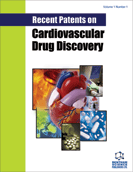Abstract
Microparticles are a heterogeneous population of small membrane-coated vesicles released by several cell lines upon activation or apoptosis. Microparticle generation seems to be a well regulated process, although these vesicles are highly variable in size, composition and function. Despite being previously considered inert debris without specific function, recent data demonstrated important pathophysiologic mechanisms orchestrated by microparticles in vascular diseases associated with endothelial dysfunction. These vesicles have been implicated, among others, in the pathogenesis of thrombosis, diabetes, inflammation, atherosclerosis and vascular cell proliferation. In addition to microparticles, circulating activated cells release smaller vesicles denominated exosomes that can also participate in vascular derangement. This mechanistic role of microparticles and exosomes in mediating vascular dysfunction indicates that they may represent novel pathways in short or long-distance paracrine transcelular signaling in vascular environment. The most recent patents regarding microparticles and exosomes are related to their procoagulant potential (U.S. Pat. No. 7005271), role in immune activation of T or B cells (Eurasian Pat. No. 0002827B1) and role in peptide vaccination (World Pat. No. 9705900A1). These commercial applications of microvesicles will be discussed in this review, as well as mechanisms involved in their origin, composition and participation in the pathogenesis of cardiovascular diseases.
Keywords: Microparticles, vascular dysfunction, atherosclerosis, platelets, sepsis, endothelium, exosomes
 30
30


